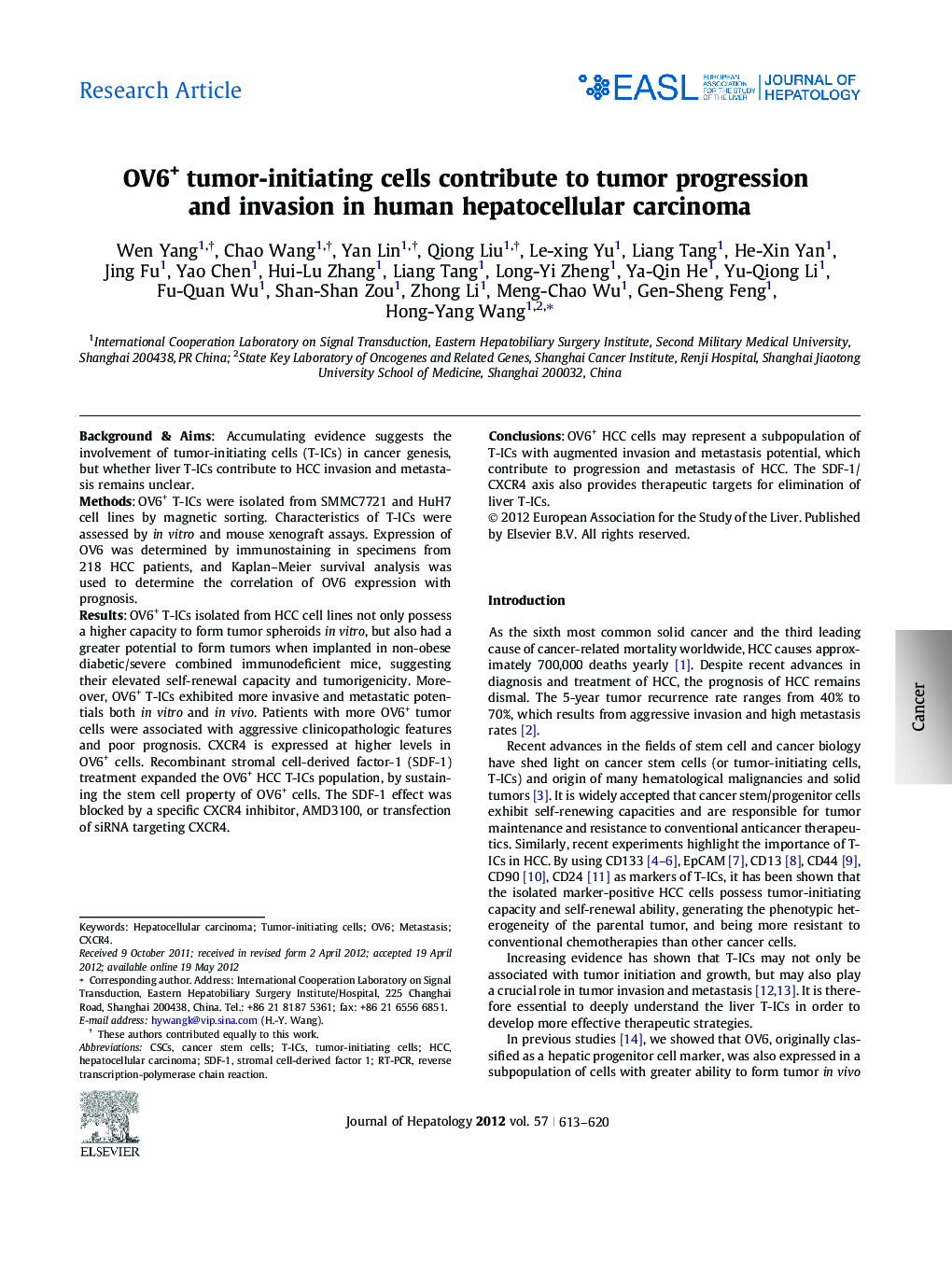| Article ID | Journal | Published Year | Pages | File Type |
|---|---|---|---|---|
| 6106529 | Journal of Hepatology | 2012 | 8 Pages |
Background & AimsAccumulating evidence suggests the involvement of tumor-initiating cells (T-ICs) in cancer genesis, but whether liver T-ICs contribute to HCC invasion and metastasis remains unclear.MethodsOV6+ T-ICs were isolated from SMMC7721 and HuH7 cell lines by magnetic sorting. Characteristics of T-ICs were assessed by in vitro and mouse xenograft assays. Expression of OV6 was determined by immunostaining in specimens from 218 HCC patients, and Kaplan-Meier survival analysis was used to determine the correlation of OV6 expression with prognosis.ResultsOV6+ T-ICs isolated from HCC cell lines not only possess a higher capacity to form tumor spheroids in vitro, but also had a greater potential to form tumors when implanted in non-obese diabetic/severe combined immunodeficient mice, suggesting their elevated self-renewal capacity and tumorigenicity. Moreover, OV6+ T-ICs exhibited more invasive and metastatic potentials both in vitro and in vivo. Patients with more OV6+ tumor cells were associated with aggressive clinicopathologic features and poor prognosis. CXCR4 is expressed at higher levels in OV6+ cells. Recombinant stromal cell-derived factor-1 (SDF-1) treatment expanded the OV6+ HCC T-ICs population, by sustaining the stem cell property of OV6+ cells. The SDF-1 effect was blocked by a specific CXCR4 inhibitor, AMD3100, or transfection of siRNA targeting CXCR4.ConclusionsOV6+ HCC cells may represent a subpopulation of T-ICs with augmented invasion and metastasis potential, which contribute to progression and metastasis of HCC. The SDF-1/CXCR4 axis also provides therapeutic targets for elimination of liver T-ICs.
